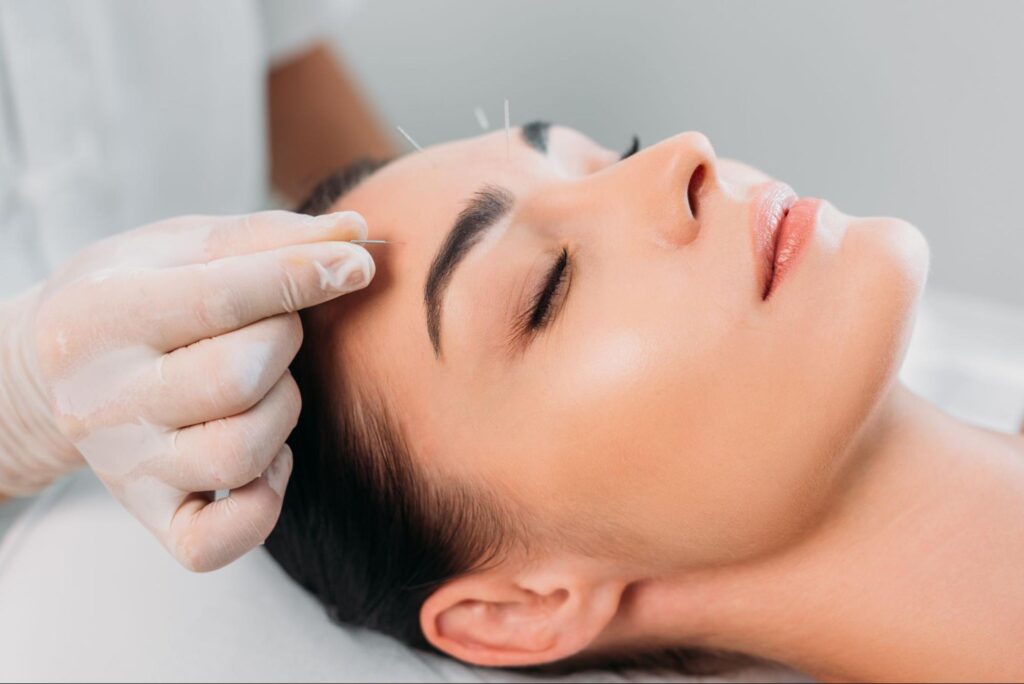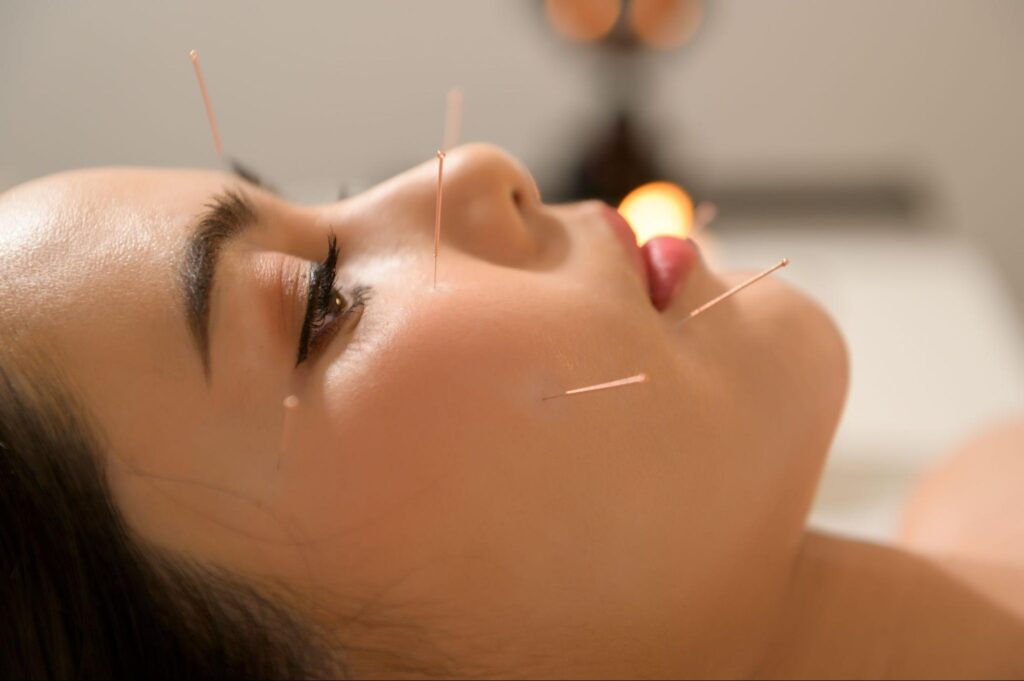
The popularity of non-invasive pain management and wellness treatments has brought acupuncture and dry needling to the forefront. Despite their similar use of fine needles, these techniques differ significantly in their origins, methods, and goals. Each offers unique benefits tailored to specific needs. Thus, understanding how these alternative treatments work and their benefits is essential before deciding which is best for you.
What is Acupuncture?
Acupuncture is an ancient practice rooted in traditional Chinese medicine that involves the insertion of fine, sterile needles into specific points on the body, known as acupuncture points. These points are situated along meridian pathways, which are believed to carry the body’s vital energy or “qi.” The technique aims to restore harmony within the body by targeting precise points associated with specific physiological functions. Practitioners carefully select points based on an individual’s condition, ensuring a tailored and minimally invasive experience.
How Acupuncture Works
The process of acupuncture is both intricate and fascinating. It draws from centuries of traditional Chinese medicine and evolves with modern understanding. While it may appear straightforward with its use of fine needles, the underlying mechanisms are complex and tailored to the individual’s unique health needs. Exploring its principles helps reveal how this ancient technique interacts with the body to support overall wellness.
Stimulation of Acupuncture Points
Acupuncture stimulates specific points on the body, known as acupuncture points, with fine needles. These points are believed to correspond to various physiological systems, and their activation is thought to influence the body’s natural processes. This targeted stimulation may encourage the release of certain chemicals or promote communication between the nervous system and other bodily functions.
Restoration of Energy Flow
Acupuncture aims to restore the balance of qi, the vital energy believed to flow through meridians in the body. Blockages or imbalances in this energy flow are considered potential causes of discomfort or illness. By addressing these disruptions, acupuncture seeks to harmonize energy pathways and foster an improved sense of equilibrium within the body.
Activation of Neurological Responses
The insertion of acupuncture needles can activate specific neurological responses that influence pain perception and bodily function. This stimulation may encourage the brain to release natural pain-relieving chemicals, such as endorphins, while modulating the nervous system. As a result, acupuncture can directly reduce discomfort and promote relaxation.
Localized Healing Response
Acupuncture promotes a localized healing response by increasing blood flow and reducing inflammation at the needle site. This process may enhance the body’s natural ability to repair and regenerate tissue in areas of discomfort. This localized effect complements the practice’s broader systemic benefits, making it a multifaceted approach to health.
Benefits of Acupuncture
Acupuncture has become a popular method for addressing health concerns due to its versatile and holistic approach. This ancient practice combines traditional techniques with modern insights, supporting various physical and emotional challenges. These benefits highlight why it remains a trusted option for many seeking improved well-being.
Pain Relief
Acupuncture effectively reduces pain by stimulating the body’s natural pain-relief mechanisms. The technique targets areas associated with migraines, back pain, and arthritis to ease discomfort and improve mobility.
Stress Reduction
The calming effects of acupuncture help alleviate stress by influencing the nervous system. Many individuals feel a profound sense of relaxation and clarity after sessions, making it a preferred choice for stress management.
Improved Sleep Quality
Acupuncture helps regulate the body’s natural rhythms, addressing insomnia and restless sleep. Sessions often leave individuals feeling more relaxed, aiding their ability to rest better.
Enhanced Digestive Function
This method supports digestive health by targeting imbalances that lead to bloating, indigestion, or irregularity. Stimulating specific points may enhance the digestive system’s overall efficiency.
Boosted Immune System
Acupuncture improves circulation and reduces inflammation, contributing to a stronger immune response. Regular treatments help the body fight off illnesses more effectively and recover faster.
Increased Energy Levels
Sessions often leave individuals with a noticeable increase in energy due to better blood flow and overall balance. This improvement can enhance focus and vitality throughout daily activities.
What is Dry Needling?
Dry needling is a modern therapeutic technique that relieves muscle pain and improves mobility. This method involves inserting thin, filiform needles into specific areas of muscle tension known as trigger points. Unlike acupuncture, which originates from traditional Chinese medicine, dry needling is rooted in Western medicine and focuses on addressing physical dysfunction through targeted anatomical precision.
How Dry Needling Works
Dry needling is an intricate process that targets and relieves muscle tightness. While the practice may appear simple, its methods are deeply rooted in understanding how muscle fibers, trigger points, and neurological pathways interact. Exploring its mechanisms reveals how dry needling contributes to better physical function.
Targeting Trigger Points
Dry needling focuses on specific areas of muscle tension known as trigger points, which are tight knots or bands within muscle fibers. Inserting a needle into these points helps disrupt the contracted tissue, promoting relaxation and reducing localized pain. By addressing these knots directly, the technique aids in restoring muscle function and alleviating discomfort.
Neurological Stimulation
The needles used in dry needling can stimulate the nervous system, influencing how the brain processes pain signals. This stimulation may release natural chemicals like endorphins to help manage pain and create a calming effect. Over time, these changes in the nervous system contribute to long-term improvements in pain perception.
Enhancing Blood Flow
The insertion of needles improves circulation in the treated area, bringing fresh oxygen and nutrients to the muscles. This increase in blood flow supports tissue repair, reduces inflammation, and accelerates recovery. The localized effect complements broader improvements in mobility and comfort.
Benefits of Dry Needling
Dry needling is widely recognized for addressing muscle pain and dysfunction. While the practice is often integrated into physical therapy programs, its benefits make it a highly effective standalone treatment. Exploring the advantages of dry needling highlights why it has become a preferred method for many seeking relief.
Relieves Pain
Dry needling relieves pain by directly targeting trigger points that contribute to discomfort. The release of tension in these areas reduces localized pain and improves the overall function of affected muscles. This targeted approach is particularly beneficial for individuals suffering from chronic or acute conditions.
Improves Mobility
The practice helps restore range of motion by relaxing tight muscles and reducing restrictions caused by trigger points. Better muscle flexibility and function translate to improved mobility in daily activities. Thus making dry needling a valuable tool for athletes and individuals recovering from injuries.
Hastens Recovery
Dry needling supports the body’s natural healing processes by improving circulation and reducing inflammation. This accelerates injury recovery, allowing individuals to return to routines more quickly. The localized effects complement other treatments, enhancing overall recovery outcomes.
Reduces Stress
The calming effects of dry needling on the nervous system can contribute to a sense of relaxation and reduced stress. The release of endorphins during sessions promotes mental and physical well-being. This practice is not only beneficial for pain relief but also for overall emotional health.
Significant Differences of Acupuncture vs. Dry Needling
Acupuncture and dry needling share some visual similarities due to their use of fine needles, but their fundamental differences set them apart. Their unique origins, goals, and techniques cater to distinct health concerns. Exploring these aspects helps clarify why each method appeals to different individuals and conditions.
Origin and Philosophy
Acupuncture originates from traditional Chinese medicine, relying on the concept of qi, or vital energy, flowing through meridians in the body. This practice is built on restoring balance and harmony within the body by addressing disruptions in energy flow. Dry needling, rooted in Western medicine, focuses solely on musculoskeletal issues, targeting specific trigger points to relieve tension without incorporating energy-based principles.
Practitioner Training and Qualifications
Acupuncture requires comprehensive training in traditional Chinese medicine, including meridian theory, anatomy, and needle techniques. Practitioners must complete years of study, licensing exams, and ongoing certification to ensure safety and effectiveness. Dry needling practitioners, often physical therapists or chiropractors, receive targeted training courses emphasizing anatomy and trigger point therapy designed to complement their existing medical knowledge.
Purpose and Application
Acupuncture addresses physical, emotional, and energy imbalances, providing a holistic approach to well-being. The treatment is versatile, offering support for conditions like stress, digestive issues, and chronic pain. Dry needling relieves localized muscle pain, improves mobility, and promotes recovery by directly targeting trigger points, making it ideal for athletes and injury rehabilitation.
Which is Best Between Acupuncture vs. Dry Needling
Deciding between acupuncture and dry needling often depends on individual health goals and the issues being addressed. Both treatments offer unique advantages, making them suitable for different needs and conditions. Understanding the situations where each technique excels helps determine the most appropriate choice.
When Acupuncture is Best
Acupuncture is an excellent choice for individuals seeking a holistic approach to health and wellness. It is particularly effective for addressing chronic conditions, such as stress, anxiety, and insomnia, where balance and relaxation are critical. This treatment is also suitable for those who want to complement traditional medical therapies with a natural, energy-focused alternative that promotes overall well-being.
When Dry Needling is Best
Dry needling works best for individuals with musculoskeletal pain and movement restrictions caused by trigger points or muscle tightness. Athletes or those recovering from injuries often benefit from its targeted approach to improving mobility and relieving localized pain. This technique is ideal for anyone looking for quick, effective relief from specific physical dysfunctions as part of a broader rehabilitation plan.
Acupuncture vs. Dry Needling, Which is Right for You
Acupuncture and dry needling represent two unique approaches to addressing pain and promoting wellness, each with its distinct philosophy and techniques. Acupuncture draws from ancient traditions, harmonizing energy flow to restore balance and well-being. Dry needling takes a modern, targeted approach, focusing on muscular tension and mobility to deliver precise relief. Understanding your needs and working with a knowledgeable practitioner will help determine which path best suits your journey toward better health.
Discover more about the unique benefits of acupuncture and dry needling by visiting our 간송한의원123 Acupuncture & Herbs blog.




